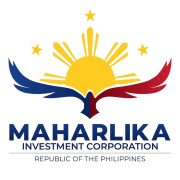Surge in pork, beef imports expected in 2025

The country’s pork imports are estimated to climb by 6 percent to 510,000 metric tons carcass weight equivalent in 2025 from 480,000 MT CWE this year, the US Department of Agriculture’s Foreign Agricultural Service (FAS) Manila said.
FAS Manila attributed the upward projection to continued challenges from the African swine fever on supply, which is not enough to cover the needs of a growing economy and expanding population.
It said a wider access given to Brazilian exporters would also push pork imports upward.

This year’s pork import estimate is down by 7 percent from 448,000 MT CWE, particularly in the second semester of 2024. It said extended pork tariff reductions until 2028 provided importers “more certainty” that they will no longer need to import more in the last quarter of each year as in previous years.
On the other hand, FAS Manila pegged next year’s local pork production to reach 1.06 million MT CWE, up by nearly 2 percent from its forecast of 1.04 million MT CWE in 2024.
“FAS Manila forecasts swine production profitability to improve in 2025 with feed costs declining as the domestic corn harvest returns to normal,” it said.
“While falling soybean meal prices provided some input cost relief, swine production costs have increased in 2024 due to rising domestic corn prices, attributed to the El Niño impact on the corn crop,” it added.
FAS Manila also said beef imports could climb by almost 3 percent to 226,000 MT CWE next year from 220,000 MT CWE.
Economic growth, an increase in population, strong consumer purchasing power and the recent downward trend in export prices of major export suppliers, specifically in Australia and Brazil, are among the driving factors for a bigger beef export.
For this year, the country’s beef imports are anticipated to rise by 10 percent from 200,000 MT CWE because of stronger than expected imports in the first half of the year.
The report likewise expected beef and carabeef production to inch up by less than 1 percent to 184,000 MT CWE in 2025 from 183,000 MT CWE due to limited grazing land for raising cattle and high feed prices.





















